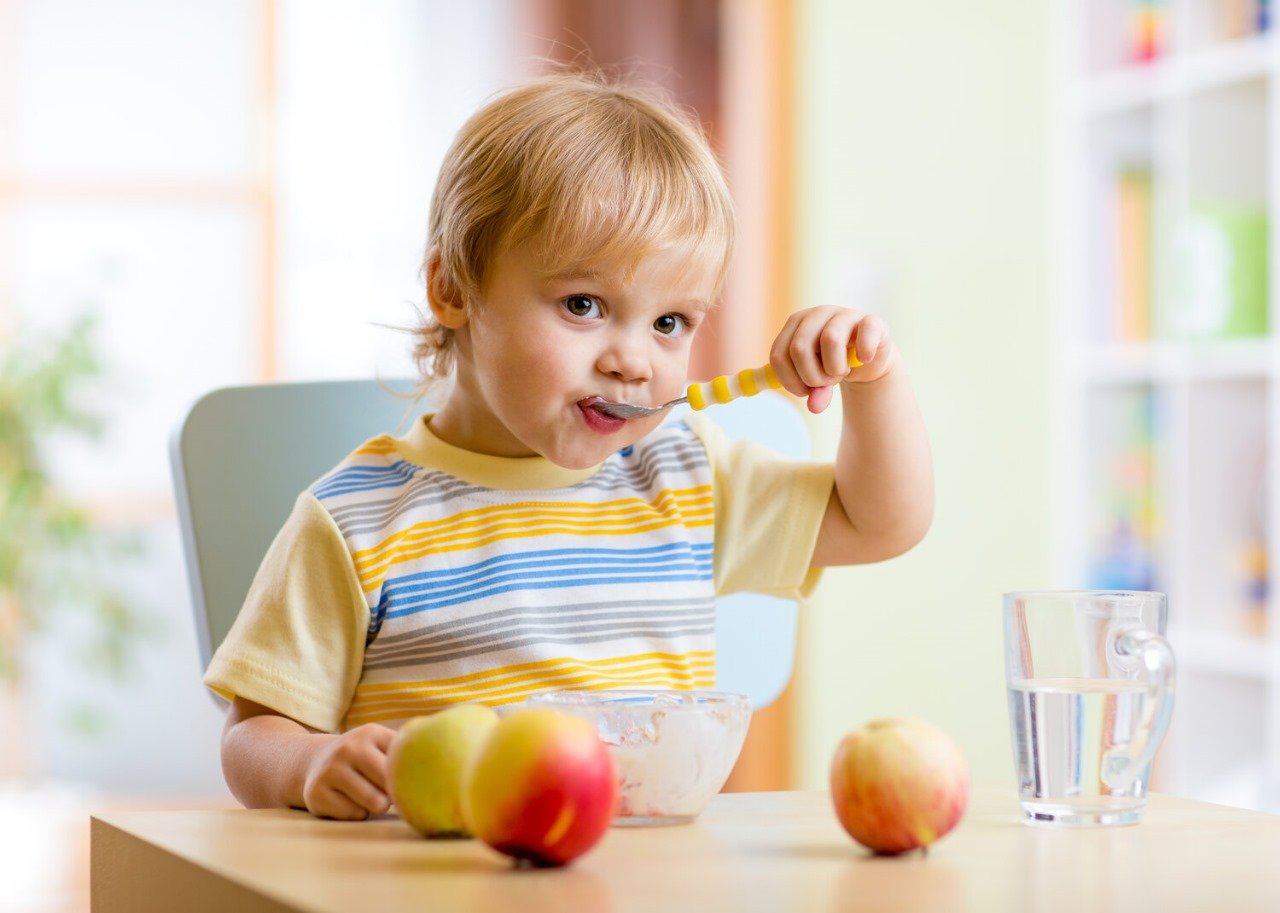Why is my child vomiting?

Nausea and vomiting are common in children and generally occur as part of a moderate, short-term sickness caused by a viral infection. Although most children recover without therapy from nausea and vomiting, it is crucial to know when to seek help if the kid does not improve. When nerves in the body or brain detect a trigger, such as food poisoning, certain illnesses or drugs, or motion, vomiting happens. Nausea frequently precedes vomiting, however this is not always the case.

Younger children may not identify nausea, but they may complain of a stomach discomfort or other general problems.

Vomiting is generally beneficial because it allows the body to purge itself of potentially hazardous chemicals.

However, even if an infant or kid has consumed a dangerous chemical, drugs and ways to induce vomiting (e.g., ipecac syrup, sticking a finger in the throat) are no longer suggested.

In this instance, it is advisable to contact for emergency medical aid right away.
Vomit versus spit up

Although the phrases are sometimes used interchangeably, there is a distinction between vomiting and spitting up. Vomiting is frequently more forceful and greater in size. Spitting up is frequently associated with a burp after dining. This is known as gastroesophageal reflux disease (GER). The majority of infants spit up milk or formula through their mouths or noses.
CAUSES OF VOMITING

Vomiting can be caused by a many different reasons. The probable reasons of vomiting vary according to the age of the kid. Newborns and babies in their first year of life — Because some newborns reflux forcefully or in big volumes, it can be difficult to distinguish if an infant is spitting up or vomiting. Your child’s doctor or nurse can assist you in determining the reason and whether treatment is required.

Forceful vomiting in newborns and early babies (up to three months old) might suggest a dangerous illness that necessitates further assessment.

A blockage or narrowing of the stomach (pyloric stenosis) or a blockage of the intestines are two potential reasons of vomiting in these infants (intestinal obstruction).

Infections of the colon or other regions of the body can also cause infants to vomit. A doctor or nurse should be seen if a young infant (newborn to three months) develops a temperature of 100.4oF (38oC) or higher, with or without vomiting. Infants and children above the age of one — Infectious gastroenteritis (an infection of the stomach or intestines), generally caused by a virus, is the most prevalent cause of vomiting in older babies and children.

Vomiting induced by gastroenteritis generally occurs suddenly and disappears fast, usually within 24 to 48 hours. Nausea, diarrhoea, fever, and stomach discomfort are some of the other symptoms of gastroenteritis. Gastroenteritis can occur as a result of consuming contaminated food or putting a contaminated object (or hand) into one’s mouth. The viruses that cause gastroenteritis are easily transmitted.

Hand washing is very important in preventing the transmission of these illnesses.
Vomiting happens less often after ingesting inadequately kept or cooked meals containing germs or poisons; this is known as food poisoning.

Other disorders, such as gastric reflux, peptic ulcer disease, an intestinal blockage (obstruction), cyclic vomiting syndrome, respiratory and urinary tract infections, and others, can also induce vomiting in older babies and children.
Adolescents — Infectious gastroenteritis is the most prevalent cause of nausea and vomiting in adolescents, as it is in children. Vomiting in a teenager with gastroenteritis normally resolves within 24 to 48 hours.Appendicitis-(inflammation of the appendix), induced vomiting (as seen with bulimia), frequent use of marijuana (cannabis), pregnancy, gastric ulcers (of the stomach), pancreatitis (inflammation of the pancreas), inflammatory bowel disease (eg, Crohn disease), and ingestion of toxic substances are among the less common causes of vomiting in adolescents
DIAGNOSIS OF NAUSEA AND VOMITING
The majority of youngsters who vomit do not require medical attention. However, you should keep an eye out for symptoms that the kid is growing worse or that he or she is not getting better within 24 hours. If your kid is in severe or chronic pain or shows indications of dehydration, he or she should be examined as soon as possible. If you are concerned about your kid, contact his or her doctor or nurse. (See ‘When to Seek Help’ for further information.) If the kid visits a doctor or nurse, he or she will go over the child’s medical history, examine him or her, and, if necessary, do the testing.
HOW TO CARE AT HOME FOR NAUSEA & VOMITING

The following are some easy suggestions for caring for children who are nauseated or vomiting at home.
Keep an eye out for dehydration – Dehydration can occur in children who are vomiting.
Mild dehydration symptoms include:
A somewhat parched or dry tongue
●Thirst
Mildly dehydrated children may not require emergency medical intervention, but they should be observed for symptoms of increasing dehydration. The following are symptoms of moderate or severe dehydration: Reduced urination (not going to the bathroom or no wet diaper in six hours) When sobbing, there is a shortage of tears. a parched or dry mouth Eyes that have sunk Hands and feet that are cool or clammy
●Listlessness
A doctor or nurse should assess a kid who is moderately or severely dehydrated as soon as feasible. Dietary recommendations — Children who are vomiting but are not dehydrated can continue to eat a regular diet as tolerated. Dehydrated children require rehydration (replacement of lost fluid)
8 Ways to get your Loveable & Beautiful Child Eating
 Are you facing Baby Feeding Problems?
Are you facing Baby Feeding Problems?
Nothing is more irritating and discouraging than spending hours preparing, cooking, and serving a meal only to have your child refuse to eat it. However, as much as we would like to control our child’s food intake, doing so leads to big power battles, mealtime meltdowns, and stress for everyone. Children’s eating habits are erratic, unpredictable, and all over the place. That’s why it’s critical not to go into mealtimes with a plan, but instead to focus on what you CAN and SHOULD manage.
Parents are responsible for the meals:
What is offered?
When it’s offered?
Where is it served?
Children are in control of:
Whether or if they eat?
How much they consume?
When we become upset and discouraged by picky eating, we might frequently turn to strategies such as:
Bribery: “If you take just one more mouthful, you can have chocolate.”
Shaming:”Your elder sibling usually finishes his lunch, so why can’t you?”
Punishment: “No TV for you tonight since you didn’t eat all of your lunch.”
Forcing:”You can’t go play until you’ve eaten two more bites,” the boss says.
Distracting: “You may watch TV or play on your phone while eating your supper.”
These may provide short-term relief, but they can have a long-term harmful impact on our children’s eating and nutrition. Although these approaches are immensely tempting, especially when you see your child finally eat a fair piece of their meal . As a consequence, viewing your child through your “short-term feeding lens” (“I just want him to finish his dinner!”) really sets your child up for failure in the long run. Over time, children lose faith in their bodily hunger cues and become less intuitive, depending more on external cues to tell them what to eat, and their fussy eating habits worsen. DONT Worry me and my team will help you in changing your and your child’s habit .
1. SELF FEEDING -DO NOT PRESSURISE

1. Allow your child to self-feed and eat at their own speed during meals
2. Provide a wide range of foods in reasonable portions
3.give them control over whether and how much they eat
4.Make an effort not to hover over your kid
5.Sit back and converse with the entire family, including your child
If you approach mealtime as “family bonding time” rather than “get my kid to eat time,” your child will feel less pressurised and will be more willing to try new or previously rejected items.
2. GET KID INVOLVED IN FOOD PREPERATION

Involve them with the purchasing, preparation, menu planning, cooking, serving, cleanup and packing there own lunch boxes Yes, incorporating your children may make the process longer and sometimes more frustrating, but the advantages are enormous and well worth it. Serve dishes family-style (almost like a deconstructed dinner!). Place all of the items on the table and allow your children to create their own supper. This allows you to remain in command of what is served while still giving your children a sense of freedom and power.
3. No Distractions while Eating

There will be no toys at the table and no eating in front of the television this also applies to parents—no phones at the table! Many parents rely on screens or toys to divert their child into eating two or three more bites, but this is counter-productive and can exacerbate the problem (as well as develop an annoying, difficult-to-break habit!). Distractions such as screens and video games interfere with a child’s capacity to self-regulate and tune in to their appetite.
4. Serve small portions in start

Too large of a portion of any food, immediately become turned off and don’t eat as much.
5.Use Colourful Utensils For Eating

Use micky mouse or favourite cartoon utensils so they feel like playing with them and eating as well.
6.DO NOT GIVE TOO MUCH MILK OR JUICES

No more than 500mL (two cups) of milk should be given to toddlers and children each day. Try half a cup at each meal (or immediately after), leaving room for another half cup before night if it is part of your routine. For hydration, water should be the sole beverage supplied between meals. Juice includes extra calories and sugar that youngsters do not require; it fills them up while providing little nutritious benefit. Did you know that a 250 mL (1 cup) juice container has six teaspoons of sugar in it? If your youngsters consume juice, restrict their intake to no more than 125 mL (1/2 cup) each day and dilute it with water (and offer at meals with food).
7.CONTROL THERE SNACKS

Rather to snacking being a random free-for-all in between meals, there should be a defined snack time where one or two items of the parent’s choice (such as yoghurt and fruit or cheese and crackers) are supplied. Toddlers and young children must be given the opportunity to develop an appetite for meals; otherwise, they will not eat much and will find it difficult to acquire self-regulation. This not only disrupts family mealtimes, but it may also have a long-term impact on a child’s nutritional intake and general relationship with food.
8.Introducing new food, previously rejected food to the kid

For unexpected or previously rejected meals, try a “trial plate.” It frequently works beautifully!! Try out the test plate! Try putting a testing plate next to your child’s regular plate or bowl. This is meant for items that are strange, frightening, or “unappetizing.” Children are not required to consume or even taste the meals on this plate, but they may touch, sniff, mash, stack, lick, or taste and politely spit them out. It’s a safe and enjoyable way to experiment with food without actually eating it. And it puts children one step closer to finally embracing them! The second alternative is to simply separate the things on their plate. Some children dislike having their foods contact, therefore a split dish might also work nicely. Recognise their bravery. Parents frequently commend their children for trying new meals or consuming specified quantities. Over-praise during meals, while well-intended, conveys the incorrect impression. We want our children to eat instinctively and to develop a taste for a range of foods in their own time. Instead of applauding, recognise and praise your child’s bravery while attempting something new, such as “That was incredibly brave of you to try the broccoli tonight!” It will build their confidence and raise the probability of your youngster trying new meals in the future. I hope these remedies helped you in finding new ways to deal with your babies hunger , and like many other parents you too will become a part of a happy parenting community .
